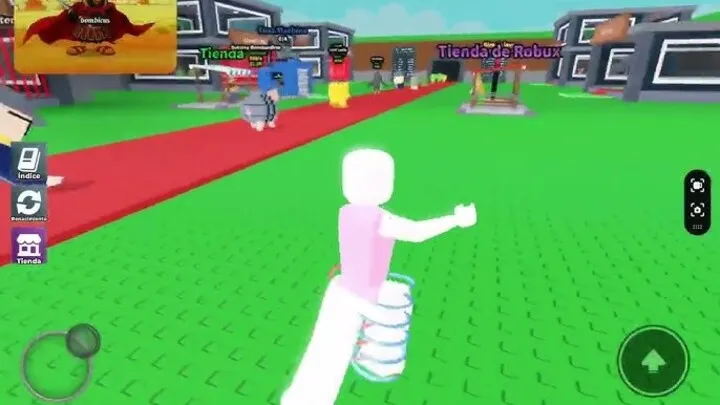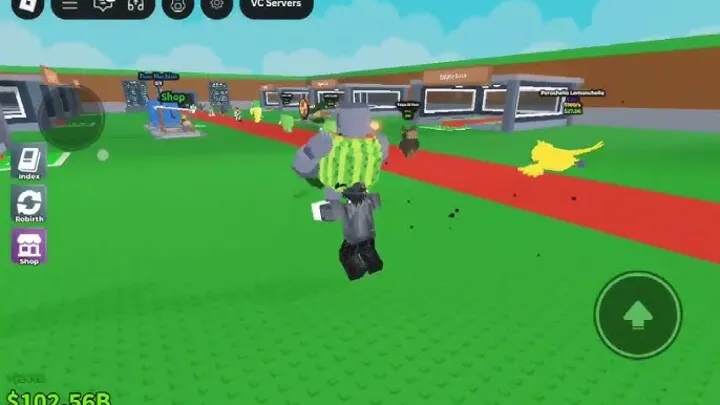Steal a Brainrot is more than just chaotic fun—it’s a game of timing, deception, and resource management. At its core, the thrill lies in successfully stealing brains while preventing others from snatching yours. Unlike many other competitive multiplayer titles, Steal a Brainrot rewards not just raw speed but psychological cunning and tactical awareness. Outsmarting your opponents to secure consistent steals requires foresight, adaptability, and a sharp understanding of the game’s mechanics.

This article dives deeply into strategies, tips, and psychological techniques to dominate brain stealing. We’ll explore each phase of gameplay, from early-game preparation to late-game execution, and cover both offensive and defensive approaches. By the end, you’ll be equipped with expert-level insights to improve your consistency in securing brain steals
Understanding the Basics of Brain Stealing
Before jumping into advanced strategies, you need to fully grasp the foundational rules and mechanics of brain stealing. The success of every tactic depends on understanding these core elements.
The Core Mechanic
At its heart, the objective is to steal and secure brains while preventing yours from being taken. Each player carries their own brain, making every participant both a hunter and a target. Stealing requires timing—interacting with an opponent at just the right moment while avoiding interruptions.
Why Fundamentals Matter
- Knowing steal timings prevents sloppy attempts.
- Understanding safe zones and map layouts ensures you never wander blindly.
- Recognizing the “risk versus reward” balance helps you choose when to strike and when to retreat.
Mastering these basics forms the foundation for advanced tactics we’ll cover later.
Early-Game Preparation: Setting the Tone
The first minutes of a match define the pace of everything that follows. A player who builds strong positioning and awareness early will find it much easier to steal later.
Map Awareness
At the start, spend time scouting. Identify choke points, hiding spots, and routes most players tend to follow. The early-game is less about rushing a steal and more about information gathering.
Establishing Presence
- Position yourself near contested areas without drawing too much attention.
- Avoid standing still in the open—early opportunists will take advantage of this.
- Practice subtle movements that make you appear unpredictable.
Getting the groundwork right ensures you’re not caught off guard when the action ramps up.
Reading Opponent Behavior
One of the most powerful skills in Steal a Brainrot is recognizing patterns in how other players act. Outsmarting isn’t just about raw mechanics—it’s about predicting decisions.
Observing Movement

Some players always circle the same areas or use identical escape routes. Others aggressively push brain steals without calculating risk. Learn their habits early, and you’ll know when to strike.
Exploiting Predictability
- If an opponent consistently hides after a failed steal, surprise them with a delayed chase.
- For aggressive players, bait them into lunging too early by feinting movement.
- Against cautious players, apply pressure to force mistakes.
Anticipating behavior transforms you from a reactive player into a proactive one.
Mid-Game Tactics: Seizing Opportunities
By the mid-game, most players have revealed their playstyles. This is where the pace picks up and successful brain steals become critical.
Timing is Everything
Don’t rush. Wait for distractions—when two opponents clash, that’s your window. Third-partying is one of the safest ways to secure a brain without drawing attention.
Strategic Positioning
- Lurk near high-traffic areas where brains change hands frequently.
- Use terrain to mask your approach and limit visibility.
- Always keep an escape plan in mind.
In this phase, patience beats recklessness. It’s not about grabbing every chance—it’s about striking only when success is likely.
Advanced Stealing Techniques
Now that the basics are second nature, it’s time to elevate your gameplay with advanced strategies designed to maximize efficiency and minimize risk.
Shadowing Opponents
Follow a brain carrier without immediately attacking. Let others soften them up, then swoop in at the last second to secure the steal.
The Double-Bait
- Make yourself appear vulnerable to lure a player in.
- Counter-steal as they overcommit.
- Immediately retreat to a safe zone.
Split-Focus Exploitation
When players fight over one brain, slip in and claim another. Opportunistic steals often secure wins without direct confrontation.
Defensive Awareness: Protecting Your Brain
Stealing is only half the battle—you must also defend your own brain. A careless player can dominate offensively yet still lose everything by neglecting defense.
Defensive Positioning
- Avoid being cornered where escape is impossible.
- Don’t linger in high-traffic spots when holding a brain.
- Stay unpredictable with your routes—never repeat the same escape twice.
Counter-Play Tactics
- Feint vulnerability to bait a steal, then punish.
- Turn chases into ambushes by doubling back.
- Use obstacles to break line of sight and reset engagements.
Great players don’t just steal well—they protect just as fiercely.
Exploiting Psychology in Opponents

Victory in Steal a Brainrot isn’t purely mechanical. Psychological manipulation plays a massive role in outsmarting your enemies.
Mind Games
- Baiting: Pretend to expose yourself, only to reverse at the right time.
- Misdirection: Lead enemies toward another opponent’s brain to create chaos.
- Confidence Projection: Play as if you’re always in control—hesitant opponents will avoid direct confrontation.
Tilting Your Opponents
A frustrated opponent makes mistakes. Consistently stealing from the same player or denying their steals creates mental pressure that disrupts their decision-making.
Late-Game Strategy: Securing the Win
As the match nears its end, tension escalates. Every decision matters, and small mistakes can throw away a near-guaranteed victory.
Risk vs Reward Balance
- Don’t take unnecessary risks if you already lead.
- If behind, you must gamble—but choose the moment carefully.
- In final minutes, brain security is often more important than additional steals.
The Decisive Strike
- Target the current leader to destabilize the scoreboard.
- Use chaos in the final scramble to mask your movements.
- Prioritize survival—losing your brain late is devastating.
Endgame success requires composure and cold calculation.
Team Play and Cooperative Steals
While Steal a Brainrot often emphasizes individual skill, temporary alliances and opportunistic teamwork can provide huge advantages.
Coordinated Pressure
Two players can work together to harass a brain carrier. Even if the alliance is temporary, the mutual gain often outweighs the risk.
Betrayal Timing
The best time to betray an ally is immediately after they secure a brain. They’ll be vulnerable, and you’ll gain the reward without doing the work.
Risks of Cooperation
Trust is limited—alliances are fragile, and betrayal is inevitable. Always prepare an exit strategy.
Training and Practice for Mastery

Like any competitive game, mastery in Steal a Brainrot comes from deliberate practice. Players who consciously refine their skills achieve consistent improvement.
Focus Areas in Practice
- Reaction time drills for faster steals.
- Map memorization for efficient escape routes.
- Observation exercises to better predict opponents.
Reviewing Gameplay
Recording matches and reviewing decisions helps identify missed opportunities and repeated mistakes. Small improvements compound into consistent victories.
Conclusion
Steal a Brainrot is more than chaotic thievery—it’s a battle of intelligence, deception, and timing. Outsmarting your opponents requires understanding fundamentals, predicting behavior, mastering advanced techniques, and balancing offense with defense. By learning to manipulate psychology, seize opportunities, and practice deliberately, you’ll elevate yourself from a casual player to a feared competitor.
The key lesson is patience and cunning: don’t just chase brains blindly—plan, outthink, and execute with precision. Every successful steal is a reward not just for speed, but for strategy.

















